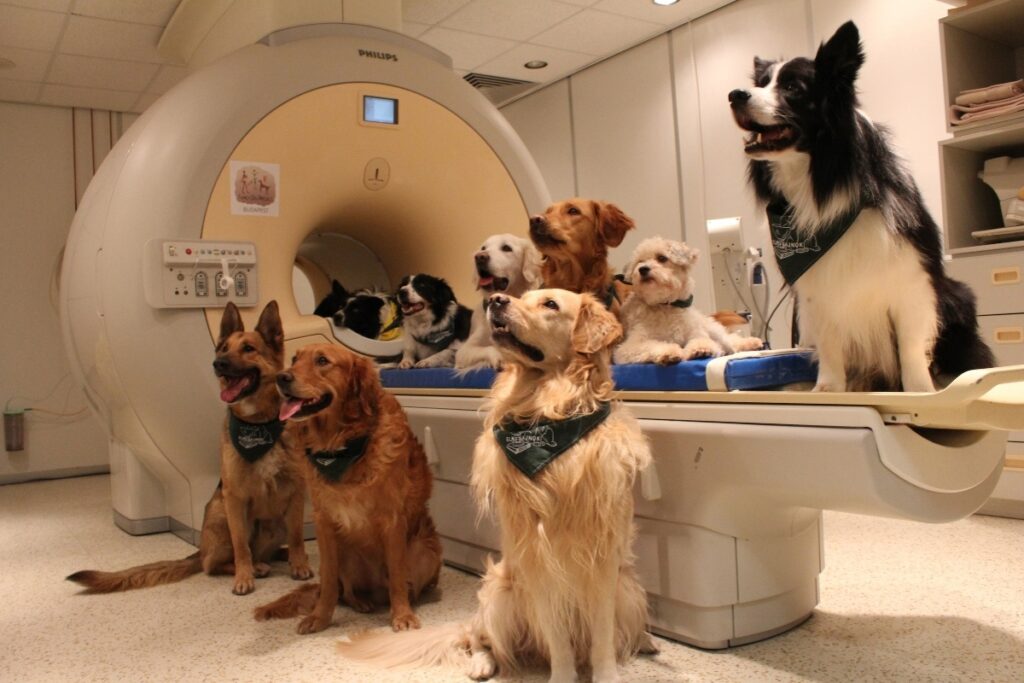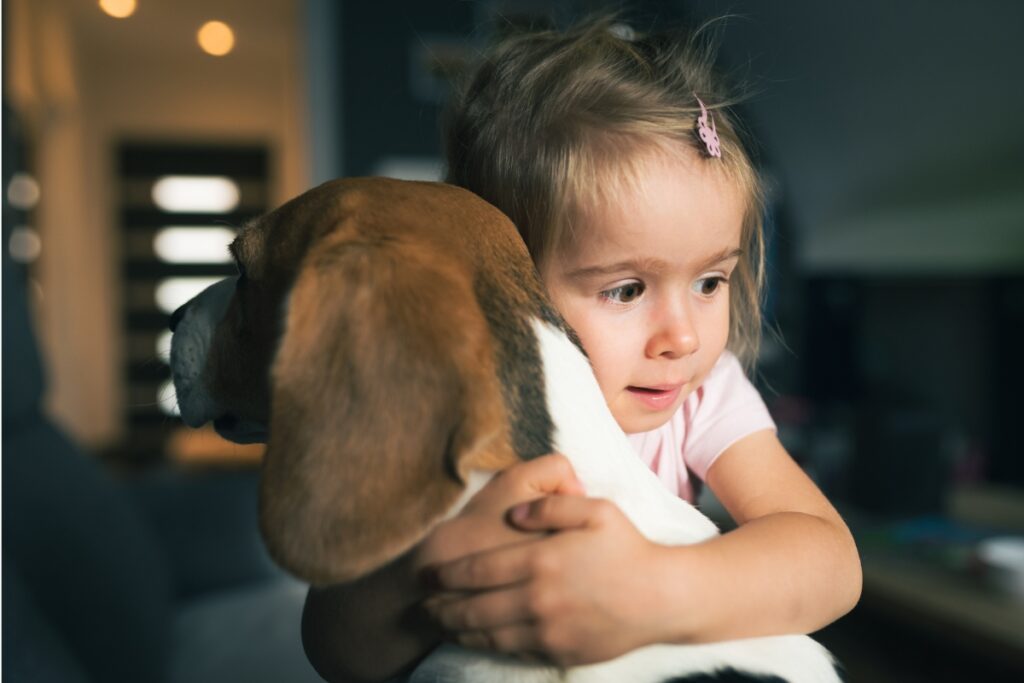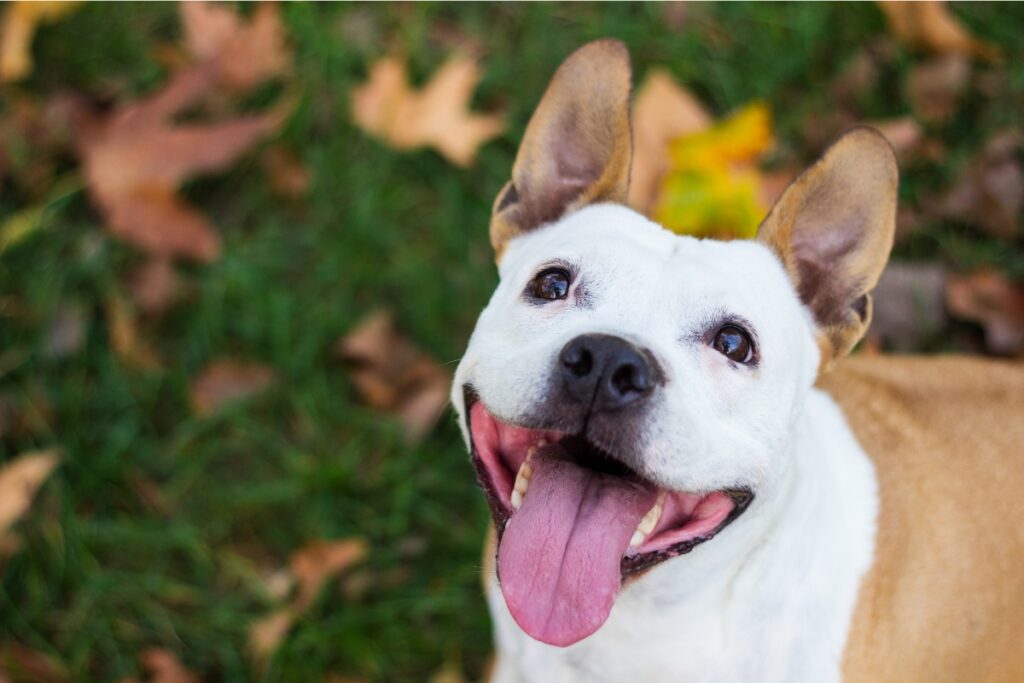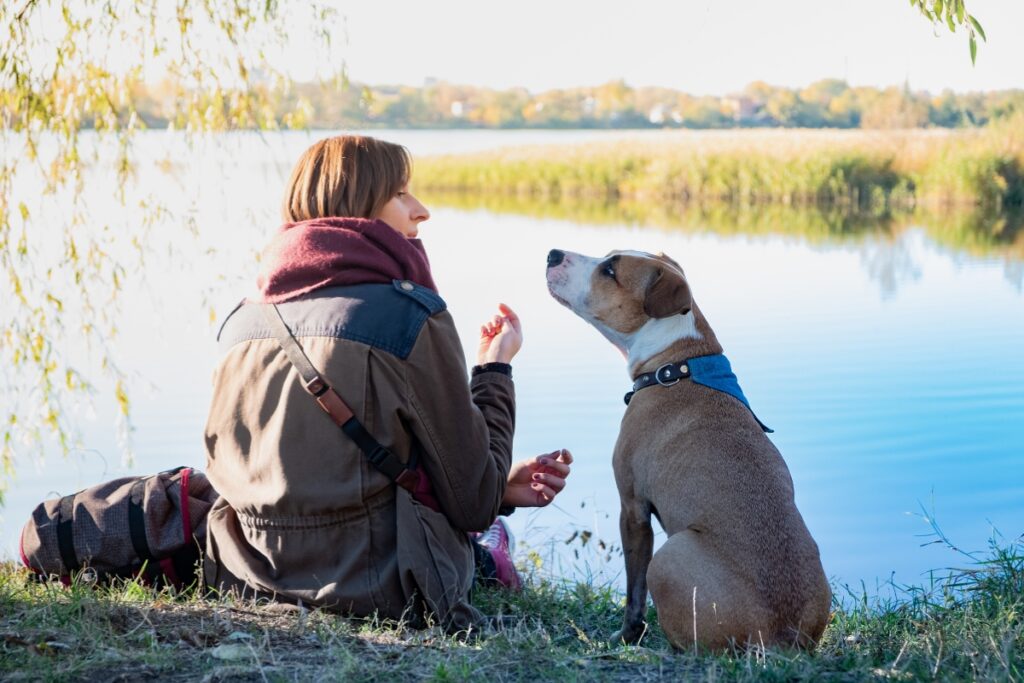
Do you ever wonder what’s going on inside your dog’s head? Thanks to brain scan studies, scientists are discovering fascinating insights into how dogs think, feel, and connect with us. From understanding our emotions to feeling genuine love, some of these findings reveal that dogs share more with humans than we once thought.
1. They Really Do Love Us

Dogs don’t just see us as a source of food or shelter—they genuinely love us like family. Brain scans reveal that dogs show heightened activity in their reward center when with their humans, more than when interacting with other dogs. This bonding behavior has even been compared to the way young children feel comforted by their parents. Dogs are biologically tuned to care about their people deeply, solidifying the notion that dogs aren’t just loyal; they’re truly attached.
2. Familiar Scents Bring Comfort

Ever notice your dog’s obsession with sniffing you? This isn’t just a quirky habit. Studies reveal that a dog’s brain lights up at the scent of their owner, bringing them both comfort and joy. With millions more olfactory receptors than humans, dogs process smells as their primary way to interpret the world. They’re especially wired to recognize the unique scent of their humans, prioritizing it over even other dogs’ scents. Your smell is, to them, the scent of family and safety.
3. They Know When You’re Happy or Sad

If you’ve ever felt like your dog can sense when you’re down, you’re not wrong. Dogs are incredibly attuned to human expressions and emotions, picking up subtle cues in our faces and body language. Studies show that they can distinguish between happy and neutral expressions and will alter their own behavior in response. They can sense if you’re paying attention to them and may react accordingly, perhaps lying close by if they sense you’re sad, or matching your excitement if they see you’re happy.
4. Dogs Have a Reward Center Like Ours

Dogs’ brains respond to positive reinforcement—just like ours do. When a dog expects a treat or praise, their brain’s reward center, the caudate nucleus, becomes active, mirroring the human response to rewards. This area of the brain, linked with positive emotions, explains why your dog can be so food-motivated or respond eagerly to praise. The shared reward pathway highlights just how emotionally wired dogs are for joy and love.
5. They Actually Understand Some Words

Dogs may not grasp complex language, but they do understand familiar words. Research has found that dogs process words in much the same way we do, with different brain regions recognizing the meaning and tone. Words like “walk” or “treat” activate the left hemisphere, while the tone of voice activates the right, helping gauge both what is said and how it’s said. This language processing gives dogs a rudimentary understanding of what we communicate, making them attentive and responsive listeners.
6. Their Dreams Are Surprisingly Similar To Ours

If you’ve ever noticed your pet twitching, barking, or paddling in their sleep, you may have wondered if they’re dreaming. Studies confirm that they are! Like us, dogs experience REM sleep, the phase where dreams occur, and their brain activity during this phase resembles ours. While we can’t know exactly what they dream about, experts suspect they may be reliving familiar events—chasing a ball, playing with their owner, or exploring the backyard. This shared dreaming capacity hints at a deeper similarity in the way dogs and humans process daily experiences.
7. Eye Contact Means Everything

Unlike most animals, dogs are incredibly comfortable making eye contact with humans. In fact, it’s an important tool for bonding and communicating needs. Studies have shown that when dogs make eye contact with their humans, their brain releases oxytocin, the “love hormone.” This act of eye contact makes dogs unique among non-primates. It’s no wonder that when your dog locks eyes with you, it feels like an expression of pure affection.
8. Oxytocin Bonds Us Together

Oxytocin is the secret behind the warm feelings dogs and humans share. It’s not just the dogs who experience rising oxytocin levels when they gaze into our eyes—ours rise too! This creates a bond similar to that between parent and child. This mutual release of oxytocin strengthens the emotional connection we have with our pets, making them feel safer and more attached. It’s a fascinating scientific explanation for why we feel so connected to our canine friends after a simple look or cuddle.
9. They Don’t Actually Feel Guilt

That “guilty” look your dog gives you when you find them in the trash? It’s actually a response to your reaction, not a sign of guilt. Studies show that dogs don’t feel guilt in the way humans do. Instead, their body language is often a reaction to your tone or facial expression. They can sense displeasure and may appear submissive, but they don’t truly grasp the concept of wrongdoing. The next time your pup looks guilty, remember it’s just them reacting to you—not to their own behavior.
10. Dogs Recognize Human Faces

Dogs have an impressive ability to recognize and remember human faces, a skill once thought unique to humans and some primates. Research has shown that the recognition area in a dog’s brain activates specifically when they look at human faces, helping them identify familiar people, and they often combine visual and scent cues to remember all their human friends. So, while they may be obsessed with your scent, your face is just as important in the way they identify and bond with you.
Stay connected with us for more stories like this! Follow us to get the latest updates or hit the Follow button at the top of this article, and let us know what you think by leaving your feedback below. We’d love to hear from you!







